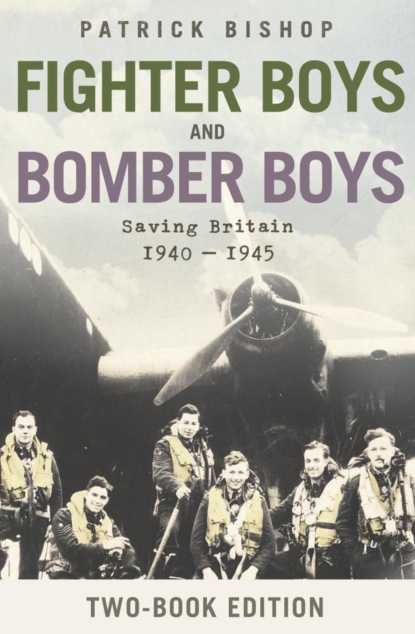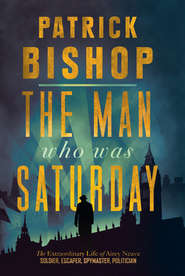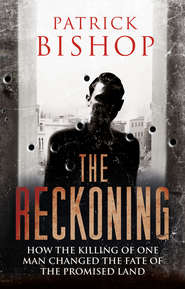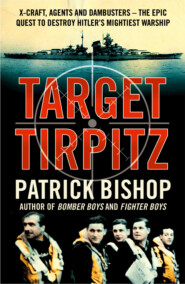По всем вопросам обращайтесь на: info@litportal.ru
(©) 2003-2024.
✖
Fighter Boys and Bomber Boys: Saving Britain 1940-1945
Настройки чтения
Размер шрифта
Высота строк
Поля
(#litres_trial_promo) Dudley Persse-Joynt was an oil executive from an old Anglo-Irish family, and the first auxiliary adjutant was the Earl of Lincoln, who later became the Duke of Newcastle. But most of the members came from families who had prospered in the reign of Victoria and whose wealth was founded on coal and cloth.
Philip Barran’s family were textile and coalmining magnates from Leeds. Joe Dawson’s father, Sir Benjamin Dawson, was a power in the cloth trade and a baronet. A later recruit, John Dundas, was related to two Yorkshire grandees, the Marquess of Zetland and Viscount Halifax, and was a cousin of Harald Peake. He was academically brilliant, winning scholarships to Stowe and Oxford and taking a first in modern history before going on to study at Heidelberg and the Sorbonne. He had joined the staff of the Yorkshire Post, specializing in foreign affairs, and was sent to report from Czechoslovakia at the time of Munich and accompanied Chamberlain and his own kinsman Halifax to Rome. Barran, always known as Pip, was stocky, boisterous, a rugby player, a trainee mining engineer and the manager of a brickworks owned by his mother’s family. His commanding officer eulogized him as ‘the very best type of AAF officer, a born leader who communicated his enthusiasm to others’.
(#litres_trial_promo) It was he who came up with the nicknames that adorned the members of 609 as they prepared for war.
The last auxiliary squadron to be formed was 616, which officially came into being on 1 November 1938 in Doncaster, South Yorkshire, as an offshoot of 609. Hugh Dundas had left Stowe in the summer of that year and was hoping to follow his brother John to Oxford. His father, however, insisted on him going into the law and he ended up being articled to a firm of Doncaster solicitors. Dundas applied to join 616 Squadron, but mysteriously failed the medical exam three times before finally being passed fit by an ex-Ireland rugby international RAF doctor after ‘the most perfunctory examination’, for which Nelsonian oversight he was eternally thankful.
Dundas finally joined in the last summer before the war. His CO was the Earl of Lincoln, who had moved on from 609, and other squadron members included Teddy St Aubyn, a Lincolnshire landowner who had moved into the AAF after being forced to resign his commission in the Grenadier Guards following his marriage to Nancy Meyrick, daughter of Kate ‘Ma’ Meyrick, who presided over the Forty-Three, a nightclub in between-the-wars London whose liveliness shaded into notoriety.
Dundas spent his time divided between Bawtry, the home of his aunt and her husband Bertie Peake – a lakeside house where the decor and routines had not changed since the 1890s – and the mess at the squadron station at Doncaster, where he also had a room and a batman. It was there that he acquired his nickname. ‘I was sitting by the fireplace in the mess one evening before dinner. On the wall at my side was the bell button. Teddy St Aubyn and others were there. Teddy felt the need for further refreshment and decided that I was conveniently placed to summon the mess steward. “Hey you,” he said pointing at me. “Hey you – Cocky – press the bell.” I promptly did his bidding. But why had he described me as “Cocky”? What had I done? Nervously I asked him.’ St Aubyn replied that he had forgotten his name, but that Dundas, an elongated figure with a shock of hair, reminded him of a ‘bloody great Rhode Island Red’. The name stuck to him for the rest of his life.
He spent the summer days learning to fly in an archaic dual-control Avro Tutor, probably one of the last RAF pilots ever to do so. Some difficult manoeuvres came quite easily, ‘But slow rolls I hated and had great difficulty in achieving. I felt quite helpless when the machine was upside-down and I was hanging on my straps, dust and grit from the bottom of the cockpit falling around me. Again and again, when inverted, I instinctively pulled the stick back, instead of pushing it forward and so fell out of the roll in a tearing dive.’
(#litres_trial_promo)
The search for new pilots also meant an increase in the strength of the university air squadrons. In May 1938 there were three, Oxford, Cambridge and London, which had been set up three years previously. That month they each increased the number of available places from seventy-five to a hundred. It had been hoped that the squadrons would provide a practical link between the air force and aeronautical research, particularly at Cambridge. The Oxford University Air Squadron (OUAS) operations book records its primary object as being ‘to provide at the university a means by which interest in the air generally and in particular in the Royal Air Force can be stimulated’. Its second function was to ‘provide suitable personnel to be trained as officers for the Royal Air Force in the event of war’. In practice, for most of its life the squadron functioned primarily as a flying club, for which the government paid.
Christopher Foxley-Norris went up to Oxford from Winchester in 1936 and was encouraged to join the OUAS by his brother, who was already a member. The prospect of the £25 gratuity paid on being accepted was also attractive. He wanted to buy a car, which he believed to be a crucial accessory if he was ever to get a girlfriend. OUAS members cut a dash. They were chauffered to their station at RAF Abingdon in two old Rolls-Royces, nicknamed Castor and Pollux, hired from a local firm. Once qualified, one was entitled to wear the squadron blazer with crest and gold RAF buttons. Foxley-Norris regarded it as ‘a corps d’élite. It was very difficult to get into because there were some very outstanding people. It was a glamorous sort of club to be in, but not like the Bullingdon or something upmarket like that.’
The most immediately noticeable member was Richard Hillary, whose harsh wit, self-regard, good looks and ability as an oarsman made him stand out in a society not short of distinctive characters or large egos. Foxley-Norris met Hillary through friends who had been with him at Shrewsbury, his old school. ‘I came across him when we were out on pub crawls and that sort of thing and I got to know him quite well. He was extremely arrogant and conceited.’
(#litres_trial_promo) Hillary was also a poor learner, and his progress was not helped by the amount of time he spent on the river. ‘This member proved very difficult to get off solo,’ noted his instructor. ‘He would not relax on the controls, he just held on like a vice.’ Once flying alone, however, he ‘improved rapidly’. The chief flying instructor judged that he ‘lacked keenness…I do not consider that he has any real interest in flying’.
(#litres_trial_promo)
Hillary was to have a powerful effect on British and international perceptions of the character and motivations of the pilots of 1940 through his book The Last Enemy, which appeared in 1941 after he had been shot down and badly burned, and became a best-seller in Britain and the United States. It is a book as much about friendship as flying, and those closest to him in the last years of his short life were all products of the University Air Squadrons. Among them was Noel Agazarian, the third son of an Armenian father and a French mother who had bought an old Sopwith Pup biplane and parked it in the garden of the family’s Georgian house in Carshalton, Surrey, for the boys to clamber over. Agazarian went from his public school, Dulwich, to Wadham College, Oxford, in 1935, leaving three years later with a boxing blue and a law degree. He joined the air squadron and was commissioned into the RAFVR in January 1939. He was a brilliant linguist, funny and disrespectful. He was also good looking and when it came to attracting women was a match for Hillary, who seems to have rather resented his easy and natural charm. ‘We called him Le Roi Soleil,’ said his adoring young sister, Yvonne. ‘He was always laughing and clowning. Noel was very much loved by everyone who met him.’
(#litres_trial_promo) Peter Pease and Colin Pinckney, both old Etonians, had also joined the Cambridge University Air Squadron and both had been commissioned in the RAFVR by the end of 1938. They met Hillary during training and their subsequent intense and poetic triangular relationship was to be celebrated in the book.
The great variety of backgrounds and schools, the wide divergences of rank, wealth and privilege, made Fighter Command perhaps the most socially diverse élite ever seen in the British military. In a country where minutely defined social gradations conditioned the reactions of human beings to each other, the mingling of the classes caused some discomfort. The situation was described in a condescending bon mot: ‘Auxiliaries are gentlemen trying to be officers. Regulars are officers trying to be gentlemen. VRs are neither trying to be both.’ It was a last, snobbish gasp from a disappearing world. Very soon the distinction would not matter. It was true that many of the men in Fighter Command came from backgrounds that were ‘ordinary’. But that did not mean that they themselves were so; and they were about to do extraordinary things.
4 The Fatal Step (#ulink_7d3bef33-ccc4-5179-b811-ebd5a557fab3)
The new pilots had been recruited to fly a new generation of fighter aeroplanes, but the machines were painfully slow in reaching the squadrons. The first Hurricanes did not appear in service until January 1938, when 111 Squadron became the first unit to receive them. It was August, and the eve of the Munich crisis, before 19 Squadron took delivery of the first Spitfires. At the end of the year most fighter squadrons were still flying biplanes.
Ronald Brown, the ex-Halton boy who had been selected for flying training, was a sergeant pilot at Northolt with 111 Squadron when the Hurricanes arrived. The squadron commander and flight commanders were the first to test them. Then it was the turn of the junior pilots. They were told to keep the undercarriage lowered in order to reduce speed. The great power of the Merlin engine, twice as potent as anything they had previously known, would take time to adjust to, it was thought. Brown, even though it was the first time he had handled a monoplane, in fact found it ‘quite an easy plane to fly’.
(#litres_trial_promo) Most pilots’ accounts of their experience of the Hurricane, however, reveal a mixture of trepidation and elation. Roland Beamont remembered ‘a feeling of exhilaration with all this power and being able to get up to 300 miles an hour on the air-speed indicator very easily in a shallow dive at any point in your flight. This was a great experience for an eighteen-year-old.’
(#litres_trial_promo) The Gloster Gauntlets and Gladiators, which represented the zenith of biplane fighter design and served as a stopgap with many fighter squadrons while the new monoplanes were brought in, could manage only 230 and 255 m.p.h. respectively.
For pilots used to biplanes, the Hurricane seemed to take a long time to get airborne. Initially it had a fixed-pitch, twin-bladed propeller that only allowed one setting. With variable-pitch propellers, which were soon to come in, the pilot put the airscrew in ‘fine’ for take-off. This provided less speed but more power, giving maximum thrust – the equivalent in motoring terms of first gear. Once aloft, the pilot changed to ‘coarse’, altering the angle of the propeller blade so that it was taking bigger bites out of the air, generating less power but more speed. Later both types would be fitted with constant-speed governors that adjusted the blade angles automatically. Beamont thought flying a Hurricane was ‘simple, straightforward’. Christopher Foxley-Norris found it reassuring. ‘You get into an aircraft and it gives you confidence. You get into another one and it doesn’t…[The Hurricane] was very stable but at the same time manoeuvrable. If you didn’t want it to do a turn it was absolutely rock stable. If you did turn it was very manoeuvrable.’
(#litres_trial_promo)
The Hurricane was slower than a Spitfire but could turn more tightly. Its wide-legged undercarriage, which opened outwards, planting the aeroplane firmly on the ground, made it ‘very forgiving’, another advantage over the Spitfire, which balanced on a narrow wheelbase. The initial canvas-and-girder construction of the fuselage meant bullets and cannon shells could go straight through it without bringing the aircraft down, and its sturdy wings provided solid bracing for the eight Brownings. It was, everyone said, an ‘excellent gun platform’, better, in fact, than the Spitfire. The machine guns were arranged in two groups of four, as close in to the fuselage as they could be placed to clear the propeller. The Spitfire’s armament was spread out, with the outboard gun a third of the way in from the wing-tip; then a group of two, then an inboard gun on each wing, which could cause some flexing when the guns fired, making them less accurate. The Hurricane was fast and nimble but honest. It was not quite perfect. Pete Brothers discovered ‘it could fall out of the air if you mistreated it trying to be too clever’.
The arrival of the new fighters aroused the fervent interest of newspapers and newsreel companies. Brown remembered them making ‘an absolute meal of the Hurricane. We were wonderboys, travelling at vast speeds, pulling all this G [the heavy gravitational force exerted when turning]. We were getting constant visits from the press and staff colleges who wanted to see these things in action.’
(#litres_trial_promo) Having appeared before the Spitfire, the Hurricane was the first to plant itself in the public imagination, though its primacy did not long survive the arrival of its more beautiful sister. The public perception that it represented a battle-winning technical advance was encouraged by a government and military establishment anxious to reassure citizens that the criticisms of the rearmament lobby were unfounded. Some pilots, used to the fixed wheels, open cockpits, broad flying surfaces and manageable speeds of the old types, wondered whether they would be able to cope. The difficulties which 111 Squadron had in making the transition were not reassuring. Some pilots simply could not adjust. Several were killed. One Australian pilot took off without realizing the wheel brakes were engaged. He only avoided crashing on take-off and landing because the field was so muddy the aeroplane slithered through the grass. When he made a subsequent landing without lowering the undercarriage, he was rapidly posted away.
Pilots liked the Hurricane’s chunky lines and solid profile. The lean, curved elegance of the Spitfire inspired something more profound. There was never ‘a plane so loved by pilots’, wrote Hugh Dundas.
(#litres_trial_promo) ‘Everybody wanted to fly a Spitfire,’ said Jeffrey Quill. ‘Most pilots used to want to fly the best. It certainly was the best.’ Quill knew the quality of the machine better than anyone. He was a test pilot at Supermarine and had taken the Spitfire through the most difficult stages of its development, as the design team struggled to overcome profound technical problems that were preventing it from making the evolutionary transition from being a very good aeroplane to a great one.
Quill was intelligent, shrewd and popular in both air force and civilian aviation circles, as much for his good nature as his superb abilities as a pilot. His father was Irish, an engineer who among other things had built Sierra Leone’s water system before retiring to Littlehampton in Sussex. He died in 1926 when Jeffrey was thirteen and a schoolboy at Lancing. As a young boy he watched the aeroplanes at the RFC base at Ford, near the family home. He decided early on to go into the air force, but he was the youngest of five children and there was little money. He had to forgo Cranwell, where his family would have had to support him for two years, and applied instead for a short-service commission. His first posting was to 17 Squadron, flying Bulldogs. Then he joined the Meteorological Flight at Duxford, which made daily sorties to take weather-forecasting readings, dangerous work that was given only to very good pilots. He hoped for a permanent RAF commission. But even in 1935, with expansion under way, his prospects were not sure and with some misgivings he accepted an offer to join Supermarine as an assistant to its chief test pilot, Mutt Summers, working on the Spitfire.
Progress was fitful. The prototype could not reach the 350 m.p.h. expected of it, only scraping up to 335 m.p.h. The propeller was one problem. It had been supplied by an outside contractor. A new one was designed by the Supermarine team and added an extra 13 m.p.h. Then the body surface was not smooth enough. Sinking rivets into the skin of the airframe would have brought better aerodynamic efficiency, but doing so would take much time and money. The team stuck split peas on the prototype to simulate round-headed rivets, which were much simpler to punch, then progressively removed them during aerodynamic tests to see which surfaces absolutely required flush rivets and which did not.
Failure to solve these problems and reach the performance levels Mitchell had claimed for his design could have meant the Spitfire never going into service. Quill and the rest of the team knew what was at stake. Later he revealed how close the decision had been. ‘A lot of people felt that the Spitfire, although it had a very good performance…had been bought at too high a price. In terms of ease of production it was going to be a much more expensive and difficult aeroplane to mass produce. In terms of the ease of maintenance it was going to be a much more complicated aeroplane to look after and service…For instance, you could lower the undercarriage of a Hurricane and take the wings off because the undercarriage was in the centre section…You could take the wings off, put the tail up on a three-ton lorry and tow it along the road. You couldn’t do that with a Spitfire. If you took the wings off…it took the undercarriage off as well…There were a lot of people who were against the Spitfire for those practical considerations. Therefore if we had not been able to show a really definite advantage over the Hurricane, it probably wouldn’t have been ordered. We were well aware of that.’
A final, crucial question had to be settled. In May 1936 a prototype was sent to the RAF Aircraft and Armament Establishment at Martlesham for trials by the service’s test pilots. Before the programme was complete, the research and development representative on the Air Council, Wilfred Freeman, asked the establishment’s flight commander Flight Lieutenant Humphrey Edwards-Jones, whether the Spitfire could be flown with relative ease by ordinary squadron pilots. ‘Old “E.-J.” quite rightly said, “Yes, it can,”’ Quill said later. On the strength of this judgement, before any performance testing had taken place, the decision to order was made. Quill reckoned there would have been ‘an awful delay if he’d hedged about that. It was one of the best things ever done.’
(#litres_trial_promo)
No. 19 Squadron had been chosen as the first unit to receive the Spitfire because of its record of superlative flying, demonstrated at displays around the country by an aerobatic team which performed such impressive but not necessarily militarily useful stunts as flying in rigid formation tied together with ropes. The five pilots selected to put the Spitfire through a 500-hour series of tests included two sergeants, George Unwin, the Ruislip apprentice, and his best friend Harry Steere. Unwin was particularly struck by the sensitivity of the controls. ‘There was no heaving or pulling and pushing and kicking, you just breathed on it. She really was the perfect flying machine. She hadn’t got a vice at all. She would only spin if you made her and she’d come straight out of it as soon as you applied opposite rudder and pushed the stick forward…I’ve never flown anything sweeter.’ The Spitfire’s engine note was instantly recognizable to those who had flown it, and distinct from that of a Hurricane, even though they both had the same Merlin power unit. Many years later Unwin was coming out of Boots in Bournemouth with his wife when he heard ‘that peculiar throaty roar…I said to her, “There’s a Spitfire somewhere.” A taxi driver was standing there and said, “There she is, mate.” It is a noise you will never forget.’
(#litres_trial_promo)
Brian Kingcome believed ‘it had all the best qualities an aircraft could have. It was docile, it was fast, it was manoeuvrable, it was gentle…it did everything you asked of it.’
(#litres_trial_promo) John Nicholas of 65 Squadron accompanied Kingcome to the Supermarine airfield at Eastleigh, Southampton, where Jeffrey Quill showed them the controls. He warned them that ‘everything was sensitive…it was so light on the controls, index finger and thumb would fly it’.
(#litres_trial_promo)
There were disadvantages, too, the first of which was immediately obvious at take-off. The undercarriage hydraulics were manual and the wheels had to be pumped up by lever with the right hand. There was a natural tendency to waggle the control column back and forth during the manoeuvre, and new pilots were recognizable by the way they pitched and yawed after they got airborne. This problem disappeared with the fitting of a power pump. It was easy to forget the propeller adjustments that had to be made to the Spitfire, the same as they did to the Hurricane. Brian Considine, a trainee executive with Unilever who joined the RAFVR at nineteen, had only flown fixed-pitch propeller biplanes when he was sent to join 238 Squadron at Tangmere. He was given one short trip in a single-wing Master trainer as preparation for his Spitfire debut. He ‘took off in fine pitch and promptly forgot to put it back into coarse pitch, and did a few circles round the field thinking how marvellous it was…I made a nice landing and as I taxied in I could see the CO jumping up and down like a monkey in a rage. When I got out he told me I had wrecked the thing. I hadn’t, but it was all covered in oil.’
(#litres_trial_promo)
The Spitfire had a very long nose, which allowed the pilot virtually no forward vision when tilted on the back wheel in the taxiing position. To see ahead it was necessary to swing the aircraft from side to side. The centre of gravity was also unusually far forward, so a heavy foot on the brakes would tip the machine on to its propeller. But these, the infatuated pilots believed, were foibles not faults. The Spitfire was certainly a better aeroplane than the Hurricane and at least the equal of its German rival, the Messerschmitt 109. The former it could out-climb and out-dive. The latter it could out-turn. It was still in service in its Mark XII incarnation at the end of the war when the Hurricane had been phased out and replaced by the Typhoon. Brian Kingcome judged that ‘the Hurricane was already more or less at the peak of its operational and design potential when it first came into service…its future was strictly limited by its rugged, uncouth airframe…The Spitfire, by contrast, possessed a unique capacity for development.’
(#litres_trial_promo)
None the less the competitive spirit that the RAF, and particularly Fighter Command, fostered meant that the Hurricane pilots were loyal to their machines, maintaining to the last that they would not have swapped them for a Spitfire if given the choice. No. 111 Squadron pilots had had to endure some mockery at the time it took them to master the new fighters and finish the 500 hours of testing. George Unwin remembered that, as soon as they could muster twelve aircraft, the first thing they did was to come down to 19 Squadron at Duxford to ‘beat up’ the aerodrome, as the RAF called the practice of flying low and fast over bases to impress their rivals – or show off to girlfriends. Once 19 Squadron was able to do so, it flew over to Northolt and returned the compliment.
The re-equipment programme went slowly, moving at the limited pace that peacetime industrial capacity allowed. By the late summer of 1938 it seemed alarmingly out of step with events. The Munich crisis of September 1938 showed how swiftly the RAF might be called upon to act, and how unprepared it was to do so. As it broke, there were just six squadrons equipped with Hurricanes, only half of which were combat-ready. No. 19 Squadron had only three Spitfires, which were armed with machine guns but lacked gunsights. The remaining sixteen operational squadrons had Gladiator, Gauntlet, Demon and Fury biplanes to oppose the sleek, modern might of the Luftwaffe.
As the crisis deepened, officers of 1 Squadron and 43 Squadron joined aircraftmen in the hangars to cover the gleaming silver paint that usually decorated the Furies – to show them to their best advantage in formation flying and aerobatics – with dismal shades of camouflage green and brown. Billy Drake and his comrades were ordered to sleep in the hangars, next to the aircraft to be at full readiness. No one knew quite what to expect. ‘I think we had an idea that they would go for us on the airfields, but nobody really seemed to have any strategy in mind – not at our level anyway.’
(#litres_trial_promo)
At Biggin Hill, 79 Squadron was recalled from leave and on 27 September the auxiliaries of 601 Squadron were summoned to move from Hendon to the station, which had been designated their wartime base. At Hornchurch, 54, 74 and 65 Squadrons were called to immediate readiness and some pilots slept in crew rooms close to the aircraft. No. 74 Squadron had to abandon a gunnery practice camp at Sutton Bridge in Lincolnshire and return home, where they obliterated the squadron badges and tiger stripes adorning the fuselages of their Gauntlets and Gladiators, mixing up the paint from the colours available in the stores when the green and brown ran out. Al Deere, now with 54 Squadron, found it ‘a heartrending operation having to desecrate one’s beautiful Gladiator’. With the return of Chamberlain, waving his assurance from Hitler, the crisis fizzled out. The sigh of relief that gusted across Britain was not shared by all. ‘It is callous and wrong to say it, but when “peace in our time” was agreed, I was horribly disappointed,’ Deere admitted later.
(#litres_trial_promo)
The likelihood of the Luftwaffe bombing Britain in the early autumn of 1938 was small, but the scare the crisis engendered was real and had the useful effect of speeding up the delivery of Hurricanes and Spitfires. The episode also blew away the last wisps of complacency that clung to the air force about what the future held. Politicians might maintain that this time Hitler could be trusted and a cataclysm had been averted rather than simply postponed. But many of the young pilots, and those who commanded them, now believed that a clash with the Luftwaffe was inevitable.
By the end of 1938 the Furies disappeared from Tangmere and Hurricanes took their place. Paul Richey arrived there in March 1939. He was in his twenty-third year and had been brought up in Switzerland, France and Albania, where his father, a veteran of the trenches, had helped to organize King Zog’s gendarmerie. He was commissioned in 1937 and already knew Tangmere from visits during training. Posted there to join No. 1 Squadron, he noted the new atmosphere.











